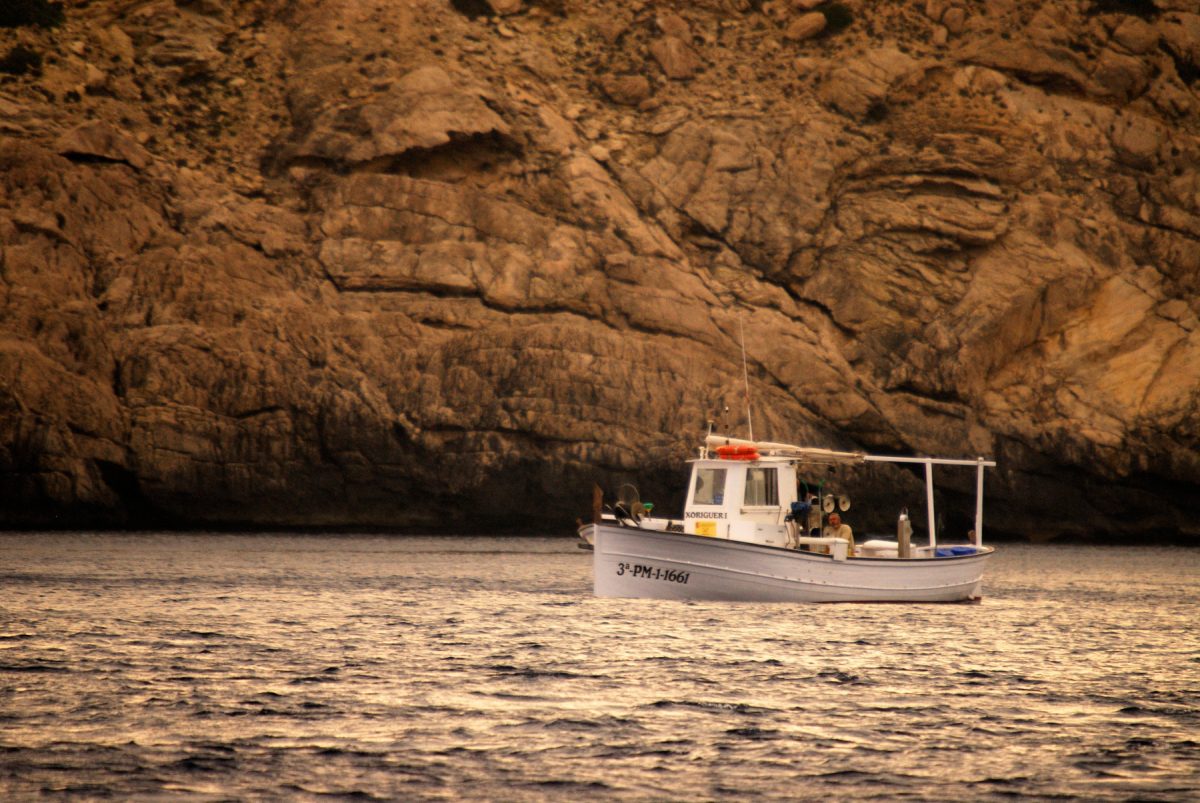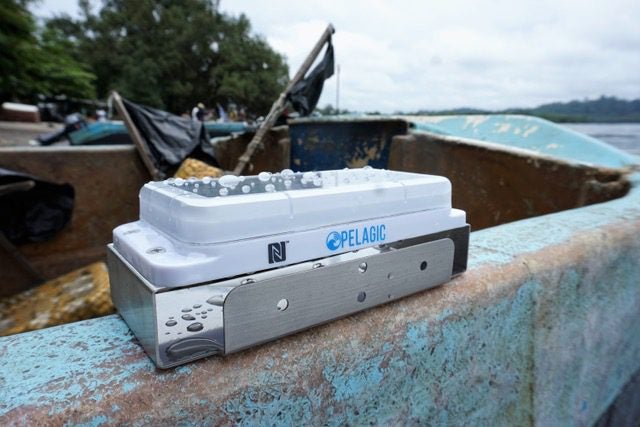July 11, 2022
Electronic monitoring devices enhance safety at sea and traceability for small-scale fishing fleets
Despite being an invaluable resource for human livelihoods, the ocean is under immense pressure with growing threats hitting from multiple fronts. Overfishing, illegal fishing, marine habitat destruction, climate change, and pollution all disrupt the delicate balance needed to preserve aquatic ecosystems, and with it the livelihood of coastal communities, especially artisanal fishers who depend on abundant fish stocks for their living. Effective regulations, appropriate monitoring tools, and good stewardship could help to eradicate these threats and ensure a brighter future for fishers and marine life.
Given the complexity of these threats, there is no silver bullet solution. Rather, we must explore different avenues and make use of the most recent technological developments. Large-scale commercial fishing customarily adopts the latest technological advances in order to enhance economic gain and safety at sea. Indeed, technological tools are used by larger vessels to easily locate schools of fish, to position vessels in space, and to record fishing catches. Despite the ease with which many of these tools are used for practical purposes, their adoption in small-scale fisheries remains a debated topic when it comes to the context of enforcement, fisheries management, and establishing a level playing field between artisanal and industrial fishers.
In particular, vessel tracking systems which transmit vessel locations and electronic catch reporting tools are invaluable systems for both authorities and stakeholders. They can allow authorities to compile data on the movement of fishing vessels and on the species caught, and can greatly help fishers better locate valuable fishing resources, evaluate fishing efforts, ensure a level playing field on fish catch distribution, and enhance safety at sea. The advantages of using these tools has been clearly demonstrated through concrete examples where companies, local authorities, and fishers came together to adopt their use and provided feedback on their experience.

Small-scale fishing vessel. © OCEANA / Juan Cuetos
Important initiatives such as the STARFISH project, which was co-funded by the European Maritime and Fisheries Fund, have contributed to the development of small, affordable, and autonomous tracking devices for small-scale fishing vessels in Greece and also in less developed countries like Mauritania. Its NEMO tracking system, which is compact and solar-powered, permits the gathering of informative position data while providing useful GSM communication to fishers and functioning as a safety beacon which can immediately locate the vessel in case of an emergency. This project has demonstrated that digitising information recording and vessel tracking through the widespread adoption of autonomous electronic devices by small-scale vessels, leads to improved connectivity, traceability, and living and working conditions for fishers.

NEMO device from CLS being installed on a small fishing vessel. © CLS (Collecte Localisation Satellite)
These devices not only offer a traceability and safety tool for fishers but also provide unprecedented insight into the fishing efforts and activities of small-scale vessels. Pelagic Data Systems has designed a Vessel Tracking System (VTS) which stores large amounts of data allowing for very precise resolution of vessel movements. By frequently recording the position of the vessel, it is possible to identify exactly the type of fishing activity performed on board. Other initiatives using a VTS system include its application as a deterrent mechanism to protect endangered vaquita in Mexico.

VTS device designed by PDS and installed on a small fishing vessel. © PDS (Pelagic Data Systems)
A final example is the tracking and catch reporting tool developed by the scientific institution AZTI. This tool, named EBArtesa, aims to give the small-scale fishing fleet of the Spanish part of the Basque Country more visibility and show its socio-economic importance to all stakeholders. EBArtesa is a device similar to a tablet which includes a SIM card that monitors the position of the vessel in real time and a touchscreen where fishers can easily submit an electronic report of their catches and discards, even when wearing gloves. The device includes images of all the species that fishers could catch in that region, and the species shown on a particular device differ depending on the type of gear being used. By adapting the electronic monitoring tool to the local reality, fishers can easily select the gear in use and the image of the species being caught, and then enter the weight. The reporting tool also includes the option to submit the fishing price and the fuel costs of the trip. With these electronic monitoring tools, it is easy to analyse the economic aspects of fishing activities and to identify the most profitable fishing grounds.
Despite these promising examples, most of the small-scale fishing fleet in the EU is exempt from requirements for using electronic devices. Indeed, vessel tracking systems and electronic reporting of fish catches are currently not mandatory for vessels under 12 metres length in the EU. Even though roughly 75% of the EU fishing fleet is made up of small-scale vessels, there remains a substantial lack of information on their activity, which compromises both their safety and their future. Whether these devices are used by fishers themselves for safety, equity, and economic reasons or whether they are used by authorities for monitoring and management purposes, they have largely demonstrated their convenience, practicality, and necessity.

